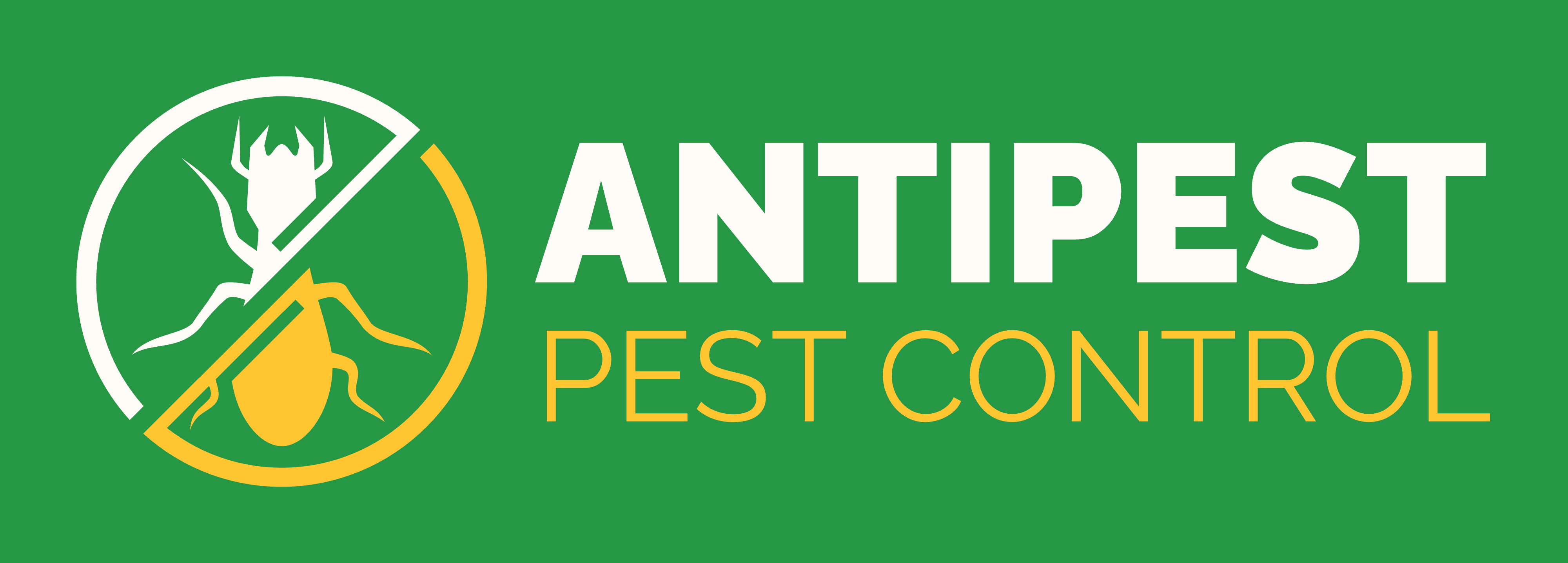Flying ants may be a normal part of nature, but when they invade your house or garden, they quickly become frustrating. That’s why many people search for how to get rid of flying ants effectively. These winged insects are seasonal, usually appearing in summer during their mating flights. While they’re not as destructive as termites, they can still cause discomfort if they swarm indoors.
This guide explains how to get rid of flying ants step by step, covering identification, natural remedies, chemical options, and long-term prevention. Whether you’ve spotted them near food, lights, or cracks in your home, knowing how to get rid of flying ants will save time and stress.
Table of Contents
What Are Flying Ants and Why Do They Appear?
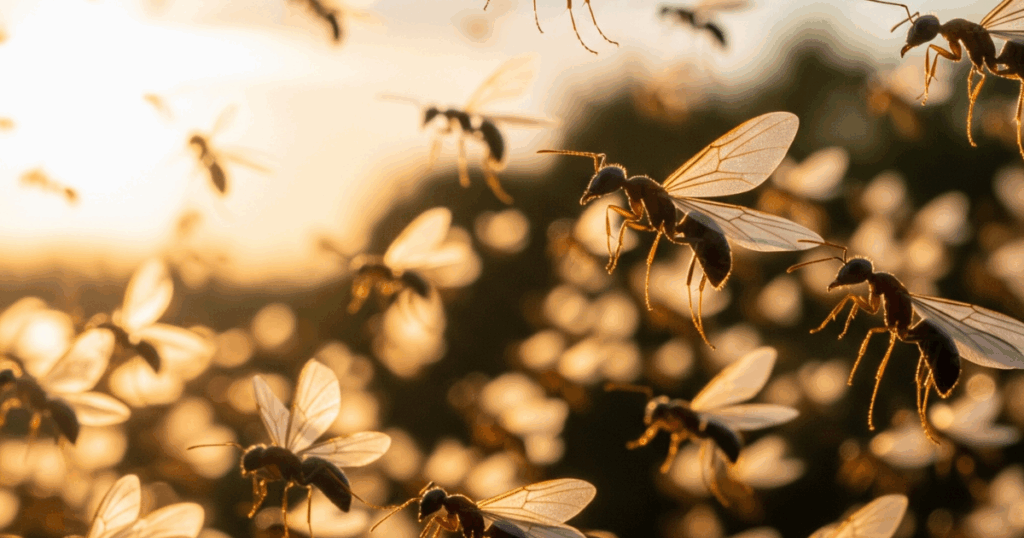
Flying ants are reproductive ants, males and queens, emerging from colonies to mate during the “nuptial flight.” The reason people seek answers on how to get rid of flying ants is often because swarms invade homes or yards in large numbers.
Main Reasons They Appear:
- Seasonal swarming during warm, humid days.
- Food sources such as sweetness, crumbs, or garbage.
- Moisture issues in damp wood or leaky pipes.
| Cause | Why It Happens | Prevention Action |
| Nuptial Flight Season | Ants leave nests for reproduction | Keep doors/windows shut during humid days |
| Food Availability | Sugary food residues attract ants | Store food properly, keep kitchen clean |
| Moisture Problems | Damp wood and leaks offer shelter | Repair leaks, ventilate interiors |
| Entry Points | Cracks, gaps, or torn screens let ants inside | Seal all entry gaps in walls/window |
Flying Ants vs. Termites
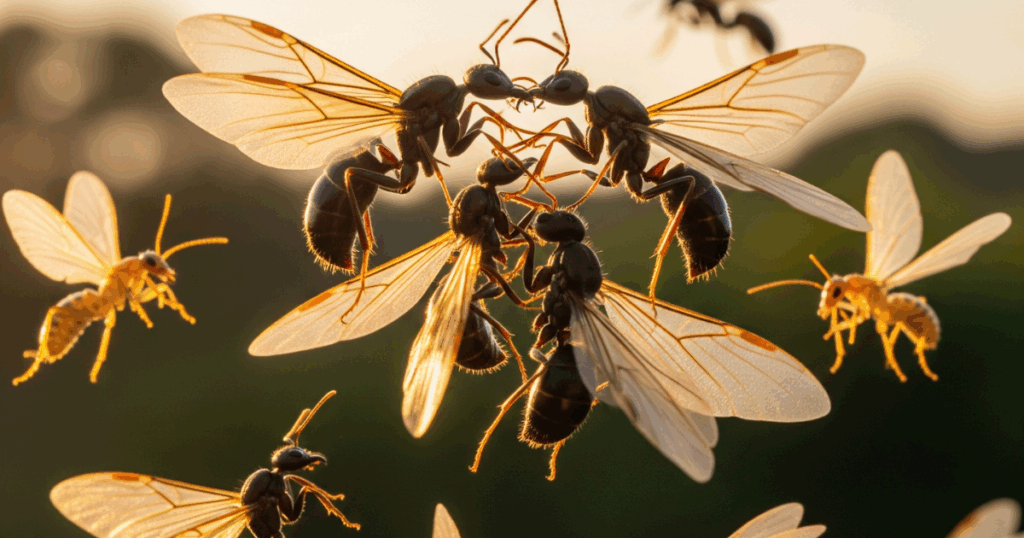
Confusing termites with flying ants often causes unnecessary panic. When exploring how to get rid of flying ants, it’s vital to distinguish them from termites first.
| Feature | Flying Ants | Termites |
|---|---|---|
| Waist | Narrow, pinched | Broad, straight |
| Antennae | Bent or elbowed | Straight antennae |
| Wings | Unequal sizes | Equal in length |
| Damage Risk | Minimal indoors | Cause wood damage |
Correct identification makes it easier to decide how to get rid of flying ants rather than treating termites unnecessarily.
How to Get Rid of Flying Ants Indoors?

Finding a swarm inside your living room or kitchen can feel overwhelming, so it’s useful to know immediate steps on how to get rid of flying ants.
Methods for Indoor Removal:
- Seal Entry Points: Blocking access reduces repeated invasions.
- Vacuum the Swarm: Quick and effective at removing groups of ants.
- Natural Repellents: Sprays of vinegar, lemon juice, or peppermint oil help deter ants.
- Control Food Sources: Keep counters clean and trash sealed.
By combining these measures, homeowners quickly learn how to get rid of flying ants without resorting to harsh chemicals.
How to Get Rid of Flying Ants Outdoors?
Outdoors, flying ants are more of a nuisance than a threat, especially near patios or yards. Here’s how to get rid of flying ants safely in exterior areas:
- Soapy Water Spray: Simple homemade solution that kills ants upon contact.
- Citronella or Peppermint Candles: Naturally deter ants during outdoor meals.
- Garden Maintenance: Trim excess vegetation and remove decayed wood.
- Ant Baits: Reduce colonies at the root for long-term management.
Indoor vs. Outdoor Control Approaches
| Location | Short-Term Solution | Long-Term Prevention |
| Indoors | Vinegar spray, vacuuming | Food control, sealing cracks |
| Outdoors | Soap spray, candles | Colony treatment, yard maintenance |
For anyone struggling during summer barbecues, knowing how to get rid of flying ants outdoors is a huge relief.
How to Get Rid of Flying Ants in the Bathroom?
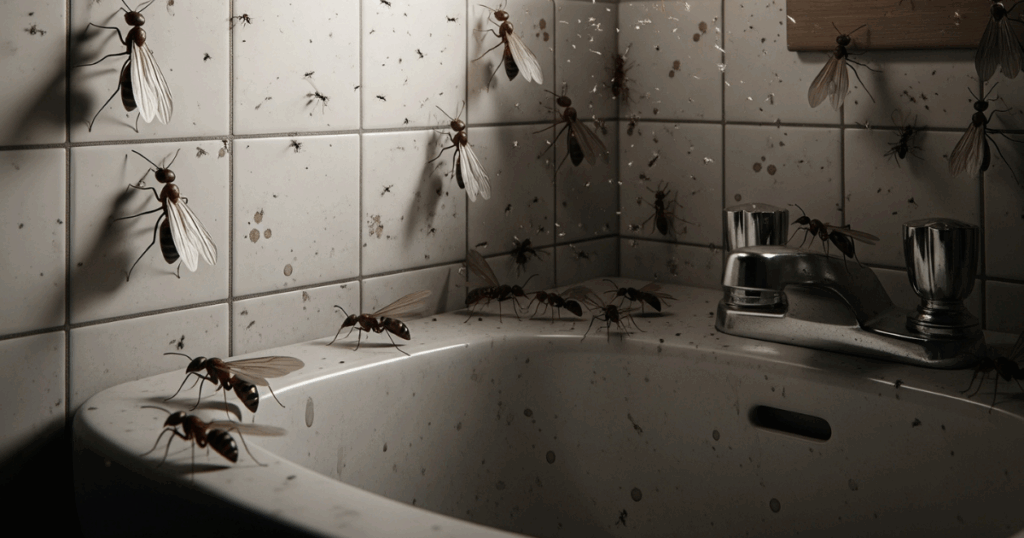
Bathrooms attract winged swarms due to moisture, warmth, and easy entry around plumbing and vents. The fastest plan combines immediate knockdown with moisture control and sealing. Start by vacuuming visible fliers, then disrupt trails with a 1:1 vinegar-water spray. Fix leaks, dehumidify to below 50%, and seal gaps at pipe penetrations, window frames, and exhaust vents to prevent re-entry and future swarms. If the goal is how to get rid of flying ants quickly in tight spaces, pair vacuuming with sealing and humidity control for lasting results.
Quick Action Plan (Bathroom)
- Vacuum fliers; empty the canister outdoors in a sealed bag.
- Spray soapy water (1–2 tsp dish soap per cup) on clusters for instant knockdown.
- Wipe trails with vinegar solution; reapply after showers to prevent pheromone re-tracking.
- Run the exhaust fan 15–20 minutes after bathing; consider a small dehumidifier.
- Seal plumbing cutouts with silicone; caulk along baseboards and around the tub.
Bathroom Troubleshooting Table
| Problem sign | Likely cause | What to do now | Long-term fix |
| Ants near sink/vanity | Leaky P-trap or damp cabinet | Dry area; use vinegar spray | Replace seals; add ventilation |
| Ants around window or exhaust | Gaps/screens torn; outdoor entry | Close/cover; soap-spray clusters | Install fine-mesh screen; caulk frame |
| Ants from baseboard seam | Wall void harboring a nest | Vacuum; avoid heavy repellents | Place bait outside bathroom; inspect |
| Reappearing after showers | High humidity, poor ventilation | Fan on; towel-dry wet surfaces | Dehumidifier; upgrade vent capacity |
This approach is ideal when deciding how to get rid of flying ants in a bathroom without harsh chemicals.
How to Get Rid of Flying Carpenter Ants?
Flying carpenter ants are reproductive alates from colonies nesting in moist or decayed wood. Focus on correct ID, colony disruption, and moisture repairs. Vacuum fliers for relief, then trace night foragers to trails and place slow-acting baits labeled for carpenter ants. Repair leaks, replace damaged wood, and trim vegetation touching the house to remove bridges and harborage. Understanding how to get rid of flying ants at the colony level prevents repeat swarms.
Identification Checklist (Carpenter Ants)
- Larger size (often 6–12mm), elbowed antennae, narrow waist.
- Front wings are longer than hind wings.
- Frass (sawdust-like material) near baseboards, windows, or eaves.
- No mud tubes (those indicate termites).
Carpenter Ant Control Table
| Step | Why it matters | How to do it effectively |
| Confirm ID | Avoids wrong treatment | Inspect size, wings, frass; compare with termite traits |
| Remove fliers | Immediate relief | Vacuum; soapy water for clusters |
| Target colony with baits | Reaches queen/colony | Place along edges/trails; avoid spraying near bait |
| Fix leaks/damp wood | Removes nesting sites | Repair roofs, siding, plumbing; replace compromised wood |
| Exterior exclusion | Stops re-entry and new nests | Caulk gaps; seal soffits; screen vents; trim branches |
If indoor swarms persist, consider professional inspection to pinpoint satellite nests, often the fastest path for how to get rid of flying ants linked to hidden colonies.
How to Get Rid of Flying Ants After Rain?
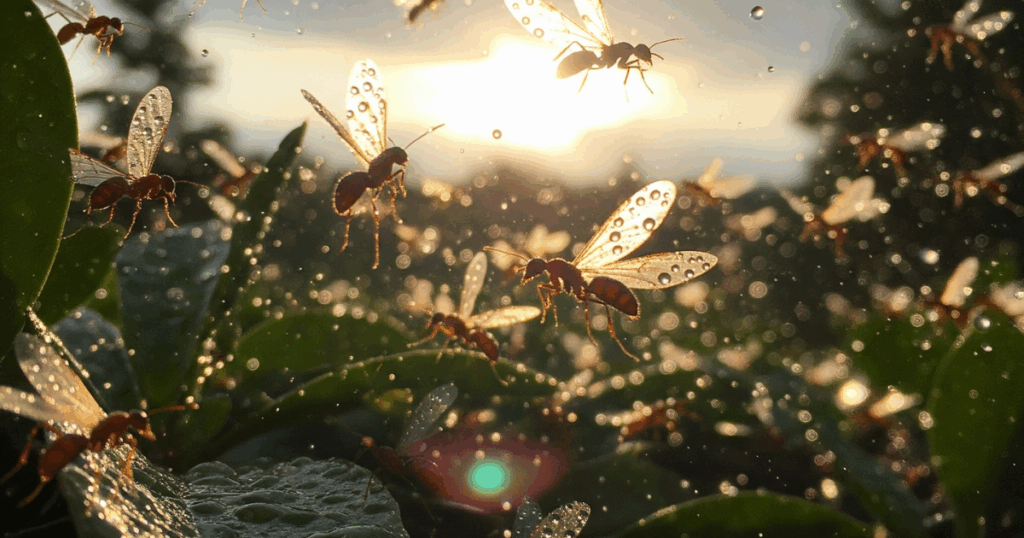
After rainfall, humidity spikes trigger nuptial flights, drawing alates to lights and through small gaps. Manage the event with immediate exclusion, light control, and short-term knockdown, then improve drainage and sealing to cut off repeat entries. This is a practical blueprint for how to get rid of flying ants when storms trigger sudden swarms.
Post-Rain Action Steps
- Close windows/doors; switch bright outdoor lights to warm/yellow or turn them off.
- Run AC or dehumidifiers to drop indoor humidity.
- Use soapy water spray on swarms clustering at doors, windows, or porch lights.
- Wipe food and drink residues on patios and decks.
After-Rain Prevention Table
| Risk factor | Why it attracts swarms | Preventive step |
| Bright exterior lighting | Draws flying ants at dusk | Use motion lights or warm/yellow bulbs |
| Poor drainage and gutters | Sustains moisture near structure | Clean gutters; extend downspouts |
| Mulch against siding | Provides damp nesting zones | Keep mulch 20–30cm from foundation |
| Unsealed utility entries | Easy indoor access | Seal cable, gas, AC line penetrations |
When the question is how to get rid of flying ants after heavy rain, prioritize light management and sealing, then address yard moisture.
How to Get Rid of Flying Ants in the Garden?
Managing outdoor swarms starts with reducing what attracts them and interrupting their flight activity. The most effective plan for how to get rid of flying ants balances quick knockdown during swarms with long-term habitat fixes. Focus on light management at dusk, moisture control, and limiting food sources like honeydew from aphids. When choosing how to get rid of flying ants in landscaped areas, favor targeted baits and plant-safe measures to protect pollinators.
Garden Action Plan
- Knockdown during swarms: Spray soapy water on clusters around patios, pergolas, and deck lights.
- Reduce attraction: Switch to warm/yellow bulbs; cover compost; avoid leaving sugary drinks outside.
- Control plant pests: Treat aphids/scale with horticultural soap or neem to cut honeydew that draws ants.
- Habitat cleanup: Improve drainage, thin wet mulch, remove rotting wood/stumps, and clear heavy leaf litter.
- Colony pressure: Place outdoor ant baits along trails; avoid spraying near bait so foragers keep feeding.
Garden Troubleshooting Table
| Problem sign | Likely cause | What to do now | Long-term fix |
| Swarms hovering at porch lights | Dusk lighting attracts alates | Turn off or switch to warm/yellow bulbs | Use motion sensors; reduce evening lighting |
| Ants crowding rose buds | Aphid honeydew food source | Horticultural soap on aphids | Encourage ladybugs; prune infested tips |
| Mounds near lawn edges | Nearby colony presence | Place outdoor baits near foraging routes | Reduce thatch; improve lawn drainage |
| Activity under mulch by trunks | Damp mulch harborage | Rake/air mulch; keep dry | Keep mulch 20–30cm away from stems/foundation |
| Repeated post-rain swarms | Humidity-triggered flights | Soapy water clusters; close doors | Seal gaps; maintain gutters and downspouts |
How to Get Rid of Flying Ants in the Kitchen?
Indoors, the priority is fast removal, trail disruption, and sealing access. For anyone wondering how to get rid of flying ants where food is prepared, pair immediate knockdown with strict sanitation and strategic baiting away from prep zones. The aim is to stop current activity and reduce the colony’s incentive to target the kitchen.
Kitchen Action Plan
- Immediate control: Vacuum fliers; use 1–2 tsp dish soap per cup of water for on-contact knockdown.
- Erase trails: Wipe counters, backsplashes, and thresholds with a 1:1 vinegar-water solution.
- Secure food: Store sweets and pet food in sealed containers; clean spills quickly; rinse recyclables.
- Block entry: Seal gaps at window frames, baseboards, and under-sink plumbing penetrations; add door sweeps.
- Smart baiting: Place sugar-based baits along travel routes outside the kitchen (hallway/baseboard) to avoid repelling ants from food areas.
Kitchen Troubleshooting Table
| Problem sign | Likely cause | What to do now | Long-term fix |
| Ants near fruit bowl/toaster | Exposed sugars/crumbs | Store fruit covered; wipe crumbs | Airtight storage; nightly counter wipe-down |
| Activity under the sink | Moisture and pipe gaps | Dry area; vinegar wipe; set nearby bait | Reseal pipe cutouts; repair slow leaks |
| Swarms at window/door | Torn screens or gaps | Close/repair screens; soap-spray clusters | Weatherstrip; install a door sweep |
| Ants behind appliances | Heat + crumb buildup | Pull out, vacuum, and clean | Quarterly deep clean of stove/fridge zones |
| Persistent indoor swarms | Nearby colony/wall void source | Vacuum; bait along exterior routes | Professional inspection if recurrence continues |
How to Get Rid of Flying Ants Naturally?
A natural plan blends mechanical removal, mild household sprays, essential oils, and habitat management. It’s effective for routine swarms and ongoing prevention, especially around children and pets, when used correctly. For homeowners prioritizing low-toxicity methods, this is a reliable path for how to get rid of flying ants without conventional insecticides.
Natural Tools and How to Use Them
- Soapy water: 1–2 tsp dish soap per cup; spray directly on fliers and clusters.
- Vinegar-water (1:1): Disrupts trails; great for counters, thresholds, frames.
- Citrus (lemon/lime): Juice or peels at entry points; refresh daily at first.
- Essential oils: Peppermint, tea tree, clove, or lemongrass, 10–15 drops per cup water with a drop of soap as emulsifier; spot-test surfaces.
- Diatomaceous earth (food-grade): Light dust along baseboards and thresholds; keep dry for effectiveness.
Natural Method Comparison Table
| Method | Best use case | Pros | Cons/Notes |
| Vacuuming | Immediate indoor swarms | Instant, residue-free | Doesn’t affect colony |
| Soapy water | Quick knockdown of clusters | Cheap, effective on contact | Needs reapplication |
| Vinegar spray | Trail disruption | Non-toxic, doubles as cleaner | Strong odor; short residual |
| Essential oils | Repellent at entries | Pleasant scent options | May repel away from baits; test surfaces |
| Diatomaceous earth | Along trails/thresholds | Low-toxicity, long residual if dry | Ineffective when wet; avoid inhalation |
| Low-toxicity baits | Colony-level reduction | Minimal chemical exposure | Keep away from sprays and strong scents |
By combining these natural steps, it becomes easier to decide how to get rid of flying ants in a way that aligns with safety and sustainability goals.
Chemical Options for Persistent Infestations
If you’re still asking how to get rid of flying ants after trying natural remedies, chemical treatments can provide quick relief.
- Aerosol sprays work instantly on visible swarms.
- Ant baits lure ants, which carry poison back to the colony.
- Residual sprays create a protective shield around doors and windows.
Read product labels before applying, and remember that knowing how to get rid of flying ants with chemicals requires caution indoors.
Preventing Flying Ants Long Term Solutions
Once you’ve learned how to get rid of flying ants, keeping them from coming back is just as important. Prevention reduces future swarming.
- Seal cracks around walls and windows.
- Control moisture by fixing leaks and reducing damp areas.
- Food management: Seal containers, clean crumbs, and empty bins daily.
- Lighting adjustments: Replace outdoor white bulbs with yellow ones that attract fewer insects.
| Cause | Attraction to Flying Ants | Preventive Action |
| Moisture | Breeding environment | Fix leaks, ventilate |
| Cracks in walls | Entry points | Seal with caulk |
| Outdoor lighting | Attracts swarms | Switch bulb type |
| Food sources | Easy nutrition | Clean and store safely |
With these steps, you won’t have to frequently revisit the question of how to get rid of flying ants.
When Professional Help is Necessary?
Sometimes, home solutions aren’t enough. If large swarms keep appearing, experts know how to get rid of flying ants permanently by targeting hidden colonies.
Call professionals if:
- Swarms persist for weeks.
- Ants are emerging from walls.
- You notice multiple nests in your yard.
For comprehensive and hassle-free flying ants removal and long-term pest prevention, trust the professionals at Antipest Office. Visit us at the Antipest Office, Our trained technicians use safe and effective methods to protect your home and business. For service bookings and consultations, call us at +91 9819018398 .
Conclusion
Now you know how to get rid of flying ants using natural sprays, chemical methods, and preventive actions. The most effective approach is a combination of removing what attracts them and sealing entry points to stop future invasions. Whether you choose simple homemade solutions or professional pest control, being proactive about how to get rid of flying ants ensures your home stays comfortable year-round. The next time they swarm, you’ll see them as a minor nuisance, not a mystery problem.
From identifying white ants vs. termites to removing sugar ants, bed ants, laptop intruders, and even car infestations, learn simple, effective steps to get rid of ants anywhere, anytime!
How to Get Rid of Flying Ants? – FAQs
What is the quickest method for how to get rid of flying ants indoors?
Vacuuming swarms and spraying vinegar-water mixture provides an immediate solution for indoor infestations.
How to get rid of flying ants without chemicals?
Use lemon juice, peppermint oil, and soap sprays to repel or kill flying ants naturally.
How to get rid of flying ants in kitchens?
Clean up crumbs, use vinegar spray, and seal any cracks or entry holes around sinks and windows.
Can I learn how to get rid of flying ants in bathrooms?
Yes. Fix leaks, reduce dampness, and spray vinegar or lemon solution to prevent flying ants in damp bathroom conditions.
How to get rid of flying ants in the garden?
Spray soapy water, trim greenery, and place outdoor ant baits to stop swarming.
Do pest experts know how to get rid of flying ants permanently?
Yes, professionals use colony-targeted treatments that eliminate root problems for long-term solutions.
How do I know if I need tips on how to get rid of flying ants or termites?
Check waist size and wings; flying ants have narrow waists and uneven wings while termites don’t.
Is knowing how to get rid of flying ants essential for homeowners?
Yes, because it prevents repeated swarms and keeps food areas safe and hygienic.
What season requires learning how to get rid of flying ants the most?
Summer and humid months are typically when flying ant swarms are most common.
How to get rid of flying ants without harming pets?
Use safe natural options like soapy water and essential oil sprays, avoiding toxic chemical insecticides.

